


When municipalities’ collection routes run like well-oiled machines, trucks make money for them, translating to lower rates for taxpayers and streamlined, effective curbside service. But waste haulers typically lack two potentially powerful tools to gauge efficiencies and inform cost-saving decisions for the most robust collection route optimization.
What’s missing are formal analyses and standardized key performance indicators (KPIs) tailored for this specialized, complex niche.
Some industry experts look to close the gap. They are developing and leveraging KPIs and analyses, aiming for more and better data to drive productivity. They find the two tools work well together: KPIs provide a baseline to inform the comprehensive analysis.
“What we are doing is standardizing the evaluation of collections to quantify performance and outcomes better using more detailed parameters than before,” says Kevin Callen of Route Optimization Consultants. He works with SCS Engineers to improve cities’ collection operations.
New performance parameters fill in where the number of stops, tons collected, and time on route leave off. These are the beginnings of KPIs, but to really tell the story of how well collection routes run, metrics must go deeper to assess near-countless variables potentially impacting outcomes. The human variable –actions of customers, drivers, and helpers – is part of that.
“You can have all the data in the world and have the route worked out to run like a Swiss watch. But the human factor is a wild card,” says Josh Krumski of SCS Engineers.
KPIs Can Peer Into Human Behaviors
Analyzing collection operations through a KPI lens sometimes enables municipalities to understand better the drivers’ judgment calls and how they play out. And it gives insight to help prepare for unpredictable circumstances in this fast-moving, changing industry.
“Ultimately, we are trying to set up methodology and identify best practices to improve route operations as they grow and change. It’s a systematic way to monitor operations closely. To determine if collections are as productive as possible and identify problems and underlying causes if they fall short,” Callen says.
Krumski leverages multiple KPIs to help with his toughest charge: balancing costs and service quality in an industry with a tight profit margin.
“When you see what towns bill to collect waste and recycling, then consider operational costs, it’s clear that if they run behind a few hours a day, it eats into their budgets. Time to get out of the truck, open the corral, service the container, put it back, and close the corral starts to add up,” he says.
SCS Engineers use KPIs to gauge more than what happens at curbside stops, leaning on them to provide objective, big-picture insight to municipalities too busy to vet as they run their daily operations. Below are KPIs that the team finds best to help inform their collection route optimization projects.
Maximum Dumps
At the top of the list is the maximation of dumps, which is about loading trucks to full capacity while minimizing commute time to and from disposal sites.
Crews should optimally do three dumps during a typical 10-hour route and two during an average eight-hour route. If they aren’t achieving this, the question is, how might they be able to?
Packout Ratio
Look for the answer in the packout ratio. This KPI defines the weight of waste in the truck versus the maximum weight it can hold. Using its full capacity more often is one way to work within a tight profit margin.
The key to getting ultimate packout ratios is distributing customers associated with long travel times across multiple routes. The distribution enables workers to fill trucks quickly, dump, and get back on their routes—not easy to do on a continuous long haul as there isn’t time to packout trucks. But with well-planned, evenly distributed courses, haulers achieve packout ratios of 85-90% to 100%. Callen says that the higher percentages translate to less trekking to and from the landfill and more time knocking off collections.
Workday Utilization
Workday utilization is the percent of the day spent completing a route, divided by scheduled hours in the day.
With seven hours typically dedicated to the job, there is little slack to tug on to expand routes. As you aim to increase productivity, be careful to avoid long days and overtime, Callen advises, especially considering you must factor in weather, truck issues, and fluctuations in set out weights, among other often unexpected circumstances that add time.
Further, Krumski cautions, “You can only be behind the wheel so many hours a day, or you fall into a Department of Transportation safety violation.”
Ensuring evenly balanced workloads helps. Krumski looks at performance data to identify drivers who may finish in eight hours and those spending 10 hours on the road.
“When I see this disparity, I ask, where and how can we change up routes for a better workday balance and get people in simultaneously? For instance, if someone broke down, another driver can pick up the load.” He looks at automation, asking if he can change any part of the route to automatic side loaders (ASL) to rely less on pickers.
Service Time
Service time is hours spent only driving the route and collecting. That’s the most obvious job, but only part of what workers do during a collection day.
Haulers do their best to maximize service time. But mitigating factors weigh in, Callen says. Workers have about four hours a day to focus solely on collecting, spending their remaining time traveling to and from disposal/recovery facilities, waiting in line there, servicing their vehicles, on required breaks, etc.
One best practice is to shoot for route times that are 30 minutes shorter than the planned workday. Here, automation may again come into play. Asking customers to schedule bulk pickups saves time too.
Route Balance
Design routes to maximize weight, fuel, miles, and time.
Krumski leverages this KPI to explore if and how he might redistribute stops on each route to be as uniform as possible while considering these four factors.
An example is having two trucks serving the same route. Due to their size, the trucks have limited maneuverability, sometimes only able to pick up on one side of a street. When two trucks serve the same route, they don’t need to double back or drive around several times.
A route balance entails diving into multiple metrics. Krumski exemplifies this with a client scenario: there are two routes; one with 1,000 stops; another with just over 500. But they are balanced because there is less distance between the 1,000 stops.
“The route with fewer stops drives several miles uninterrupted, so the picker can’t ride on the back, which takes time. If you have several hundred consecutive close stops where the picker can ride on the step and quickly get into and out of the truck, you’re fine,” Krumski says.
So besides stops, he looks at the distance between stops, time to complete a route minus downtime, and especially watches whole-route weights.
“If weights are wonky and routes with heavier loads are trailing, that’s when we focus more on weights to balance routes,” Krumski says.
“But while weight is a big factor, it’s not everything, as seen in comparing the two routes where the one with the lesser units stopped much more frequently. And sometimes, weather or different human elements throw a wrench in your plan. I saw a lot of that during COVID.”
Collection Day Balance
This KPI refers to the range of time between the minimum and maximum cumulative times spent servicing all routes on a collection day. Getting that range entails looking at the fastest and slowest routes for each day.
A major discrepancy between the fastest and slowest crews calls for evaluation. Is it a routing issue, a collection issue, or a human issue? And is an adjustment needed?
Collection days and routes should be adjusted when one day requires an additional truck.
“Let’s say you have a tri axle servicing a route in two dumps. It goes down, so you have to send in two smaller trucks. Or you need a smaller truck to navigate alleys or side streets due to detours or other circumstances requiring negotiating smaller spaces. You use a larger truck for main routes and a smaller truck for problem areas,” Krumski says.
Distance and cost to dump also commonly come into play. Sending multiple trucks to dump once may save money over having one larger truck dump multiple times.
Keeping up with Changes
While KPIs quantify performance and help inform best practices, achieving good outcomes requires keeping up with changes. Ongoing training is a must.
“When I ask drivers why they made a given decision, they routinely say it’s what they were taught. That instruction sometimes comes from someone who hasn’t been with the company in years. Best practices have to evolve to keep up with changes in community development and new technologies,” Krumski says.
The trash industry excels when it evolves as a whole. Using KPIs and existing technology has great potential to influence change and improve daily routes.
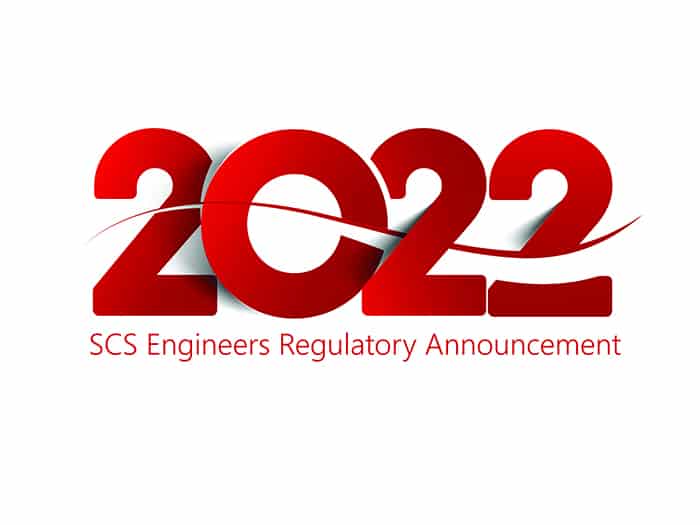
In a letter to Congress, SWANA and NWRA associations request that regulation under the Comprehensive Environmental Response, Compensation, and Liability Act (CERCLA) for addressing per- and polyfluoroalkyl substances (PFAS) contamination assign environmental cleanup liability to the industries that created the pollution in the first place. Both associations note that MSW landfills and solid waste management, an essential public service do not manufacture nor use PFAS. The industry, and ultimately the general public should therefore not be burdened with CERCLA liability and costs associated with mitigating PFAS from water and wastewater.
May 10, 2022
Re: Relief for Municipal Solid Waste Landfills from CERCLA Liability for PFAS
Dear Chairman Carper, Ranking Member Capito, Chairman DeFazio, Ranking Member Graves, Chairman Pallone, and Ranking Member McMorris Rodgers:
The municipal solid waste (MSW) management sector strongly supports the goal of addressing per- and polyfluoroalkyl substances (PFAS) contamination and holding accountable manufacturers and heavy users of these compounds. We are concerned, however, that regulation under the Comprehensive Environmental Response, Compensation, and Liability Act (CERCLA) instead would assign environmental cleanup liability to essential public services and their customers. We therefore request that Congress provide MSW landfills and other passive receivers with a narrow exemption from liability if certain PFAS are designated as hazardous substances under CERCLA. Doing so would keep CERCLA liability on the industries that created the pollution in the first place.
Context
• Landfills neither manufacture nor use PFAS; instead, they receive discarded materials containing PFAS that are ubiquitous in residential and commercial waste streams. MSW landfills and the communities they serve should not be held financially liable under CERCLA for PFAS contamination, as landfills are part of the long-term solution to managing these compounds.
• Landfills are essential public services that are subject to extensive federal, state, and local environmental, health, and safety requirements. Further, MSW landfills are important to managing and limiting PFAS in the environment, as recognized by the Environmental Protection Agency (EPA) in its December 2020 draft Interim Guidance on the Destruction and Disposal of [PFAS] and Materials Containing [PFAS].
• Just as certain airports are required by law to use firefighting foam containing PFAS, permitting authorities often require landfills to accept waste streams containing PFAS.
• Most landfills rely on wastewater treatment facilities for leachate management. Wastewater and drinking water facilities increasingly rely on landfills for biosolids management and disposal of PFAS-laden filters. Efforts to address PFAS at MSW landfills and drinking water and wastewater facilities must avoid disrupting this interdependence among essential public services to communities.
• Landfill leachate typically represents a minor proportion of the total quantity of PFAS received at wastewater treatment facilities from all sources. PFAS manufacturers or users, by comparison, contribute PFAS at levels that can be orders of magnitude higher than landfills.
Significant Economic Impacts
• Removing PFAS from landfill leachate requires advanced treatment techniques which are prohibitively expensive. Estimated capital costs to implement leachate pretreatment at a moderate-sized landfill to the extent necessary to significantly reduce PFAS range from $2 million to $7 million, with nationwide costs totaling $966 million to $6.279 billion per year for the solid waste sector. Trace concentrations of PFAS nevertheless would remain in leachate following pretreatment, exposing landfills to CERCLA liability.
• Absent relief from CERCLA liability, manufacturers and heavy users of PFAS compounds will bring claims for contribution against landfills and other passive receivers, generating significant litigation costs. EPA’s exercise of enforcement discretion will not insulate landfills from this litigation.
• These costs will be passed along to communities, water and wastewater treatment facilities, and biosolids management, all of which rely on the services of MSW landfills.
Broad Unintended Consequences
• CERCLA regulation will impel landfills to restrict inbound wastes and/or increase disposal costs for media with elevated levels of PFAS, including filters, biosolids, and impacted soils at Department of Defense facilities. The mere prospect of regulation in this area is already disrupting the interdependence of the drinking water, wastewater, and solid waste sectors.
• Food waste compost may contain PFAS due to contact with PFAS-lined packaging materials. As a result, a CERCLA designation could result in communities diverting food waste from organics recycling programs, hindering federal, state, and local climate and waste reduction goals.
• Cost increases likely will have a significant disproportionate impact on low-income households that rely on the affordability of services that the solid waste sector provides.
Recommendation
Although our sector is simultaneously pursuing “no action assurance” from EPA, the agency historically has been very hesitant to provide this relief given its policy that assurances should be given only “in extremely unusual cases.” As such, and acknowledging that EPA may have limited authority to act on our request, we recommend providing the following narrow exemption from CERCLA liability that affords relief to landfills and other passive receivers of PFAS1:
(a) IN GENERAL.—No publicly owned or operated community water system (as defined at 42 U.S.C. 300f), publicly owned treatment works (as defined at 33 U.S.C. 1292), or municipal solid waste landfill (as defined at 40 C.F.R. 258.2) shall be liable under the Comprehensive Environmental Response, Compensation, and Liability Act of 1980 (42 U.S.C. 9601 et seq.) for the costs of responding to, or damages resulting from, a release to the environment of a perfluoroalkyl or polyfluoroalkyl substance designated as a hazardous substance under section 102(a) of such Act that resulted from the discharge of effluent, the disposal or management of biosolids, the disposal of filtration media resin, or the discharge of leachate where such actions are in compliance with Federal or State law and all applicable permits.
(b) EXCEPTION.—Subsection (a) shall not apply with respect to any discharge described in such subsection that results from any gross negligence, willful misconduct, or noncompliance with any Federal or State law or permit governing the discharge of effluent, disposal or management of biosolids, disposal of filtration media resin, or waste disposal.
Thank you for your consideration of our request, and we look forward to continuing to partner with the federal government to ensure the safe and effective management of waste streams containing PFAS.
Sincerely,
National Waste & Recycling Association
Solid Waste Association of North America
cc: Senate EPW Committee Members
House T&I and E&C Committee Members
_______________________________________
1 The exemption would not extend to underlying soil and groundwater contamination from a MSW landfill or to facilities other than MSW landfills that accept waste streams with elevated concentrations of PFAS.

The Food DROP and RecycleSmart case studies in this EM article illustrate the successful collaboration between local governments and stakeholders in food recovery. In both cases, local government staff invested time to understand the barriers and benefits of different aspects of recovery. The resulting recovery programs provide local benefits by supporting the community and the collective benefit of reducing the amount of food waste sent to landfills in California.
As environmental professionals, we believe that positions us as key collaborators for these recovery programs across the country, whether helping businesses overcome the barriers and participate in food donation programs or to support the capacity expansion of recovery organizations and services. We encourage you to learn more about the food recovery organizations and services in your community and start a conversation about how to best support their work.
Start by reading the article, Collaboration Is the Key to Successful Edible Food Recovery, for advice from these SCS Engineers environmental professionals.
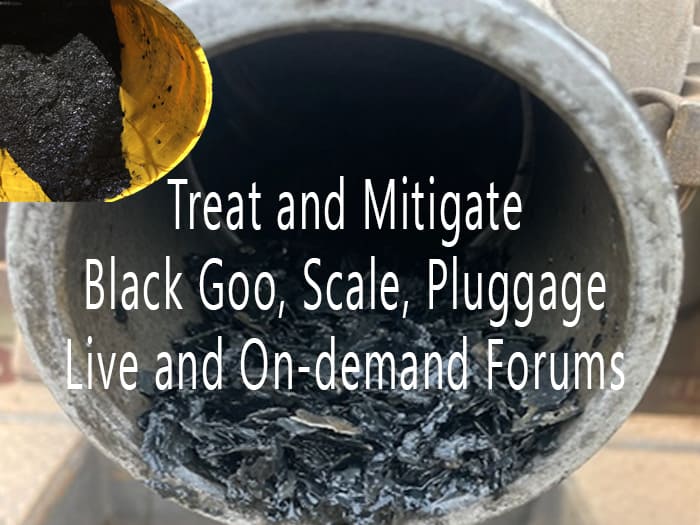
Landfills across the country are experiencing a trend ─ black goo, pluggage, and scaling in their leachate and gas collection systems. These organic and inorganic deposits are difficult to treat once they’ve seeped into liquid and GCCS systems, the pluggage slows equipment and pipes, impacting the extraction of liquids and landfill gas.
Our team of engineers, scientists, and landfill-landfill gas operations experts will provide a comprehensive discussion in May of what we are seeing and piloting in the field.
Live on Thursday, May 19, 2022
2:00 pm Eastern Time for 1 hour
Register to receive on-demand access following the live forum.
Prevent chemical deposits and pluggage before your pipes slow landfill gas and leachate collection.
This educational, non-commercial webinar with a Q&A forum throughout is free and open to all who want to learn more about landfill pluggage concerns and preventative treatments to consider. We recommend this month’s discussion for landfill owners/operators, landfill gas technicians, environmental engineers, and environmental agency staff. A Certificate of Attendance is available on request following the live session.
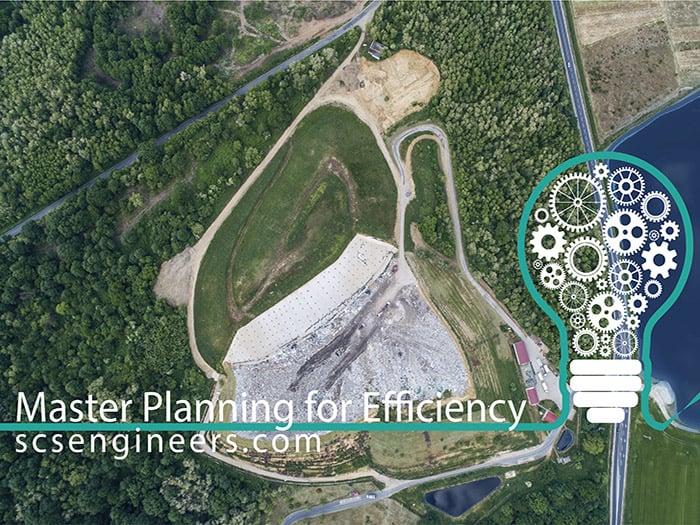
Landfill efficiency: every landfill owner or operator knows that landfills are distinctly unique. Consequently, landfill gas collection and control systems (GCCS) and leachate management systems with highly engineered components are configured precisely to tailor to each landfill’s needs. North American landfills have always tried to be good neighbors, but now are making greater strides toward reducing emissions and protecting groundwater with master planning and technology. These plans keep the effectiveness of these systems running as efficiently as possible and help prevent expensive and extensive repairs.
Today’s blog takes us out in the field examining how to plan for these flexible high-dollar infrastructure systems. These plans are taking landfill operations into the future and are adaptable to changing regulations around emissions and the evolving waste streams that affect gas production.
We’ll also provide resources to similar articles about leachate systems, remote monitoring systems, drones, and carbon sequestration that are helping to keep your carbon footprint even lower and support landfill efficiency.
In the April issue of WasteAdvantage Magazine, Professional Engineers Vidhya Viswanathan and Maura Dougherty discuss how operators with 5-year and master plans in place get a payoff with a system that serves them well and costs less. They can prepare early for capturing their gas, use the plan to install gas collection infrastructure on a timely basis, and help guide them through post-closure among the daily benefits. Read Master Plan to Lower Your Landfill GCCS Infrastructure Investments here.
Planning/Managing Leachate/PFAS
Remote Monitoring and Control and Drones

(l) Liquids addition. The owner or operator of a designated facility with a design capacity equal to or greater than 2.5 million megagrams and 2.5 million cubic meters that has employed leachate recirculation or added liquids based on a Research, Development, and Demonstration permit (issued through Resource Conservation and Recovery Act (RCRA), subtitle D, part 258) within the last 10 years must submit to the Administrator, annually, following the procedure specified in paragraph (j)(2) of this section, the following information:
(1) Volume of leachate recirculated (gallons per year) and the reported basis of those estimates (records or engineering estimates).
(2) Total volume of all other liquids added (gallons per year) and the reported basis of those estimates (records or engineering estimates).
(3) Surface area (acres) over which the leachate is recirculated (or otherwise applied).
(4) Surface area (acres) over which any other liquids are applied.
(5) The total waste disposed (megagrams) in the areas with recirculated leachate and/or added liquids based on on-site records to the extent data are available, or engineering estimates and the reported basis of those estimates.
(6) The annual waste acceptance rates (megagrams per year) in the areas with recirculated leachate and/or added liquids, based on on-site records to the extent data are available, or engineering estimates.
(7) The initial report must contain items in paragraph (l)(1) through (6) of this section per year for the most recent 365 days as well as for each of the previous 10 years, to the extent historical data are available in on-site records, and the report must be submitted no later than June 21, 2022.
(8) Subsequent annual reports must contain items in paragraph (l)(1) through (6) of this section for the 365-day period following the 365-day period included in the previous annual report, and the report must be submitted no later than 365 days after the date the previous report was submitted.
(9) Landfills in the closed landfill subcategory are exempt from reporting requirements contained in paragraphs (l)(1) through (7) of this section.
(10) Landfills may cease annual reporting of items in paragraphs (l)(1) through (6) of this section once they have submitted the closure report in § 62.16724(f).
If you need assitance meeting the regulations, please contact your project manager or send a request to
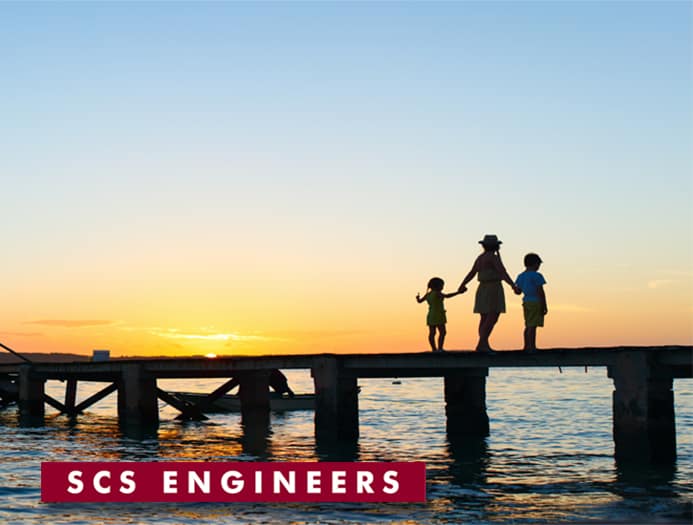
Engineering News Report publishes the ENR Top 500 List, which ranks global design/engineering firms by revenue. SCS Engineers again ranks in the top 100, moving up this year from #73 to #59. We thank our clients and our employee-owners for helping SCS continue to rank as a top-tier environmental services engineering, consultanting, and construction firm.
ENR is one of the premier companies tracking the A&E industry, and these rankings are closely followed as they publish throughout the year. SCS Engineers is also recognized in the Sewer & Waste List of Top 20 companies globally, ranking at #5, up from #10 the previous year.
Climate change and reducing our nation’s carbon footprint are important challenges facing our planet. SCS Engineers remains a leader in recovering and utilizing methane from landfills, a potent greenhouse gas. In the last decade, we’ve been expanding our role to include more utilization of biogas from agriculture, carbon sequestration, management of other greenhouse gas and environmental impacts for multiple sectors while reducing methane production in landfills by diverting organics.
SCS designs and supports innovative environmental solutions with our in-house award-winning technologies to help our clients. With more data and control available 24/7, our clients can make more informed decisions, operate more efficiently, running cleaner and safer while delivering essential services, products, and properties.
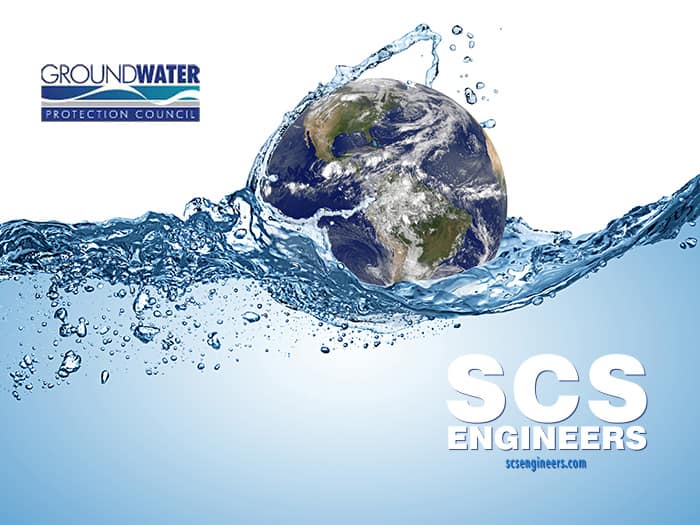
Join EPA, SCS Engineers, and the GWPC for the 2022 Annual GWPC & UIC Conference in Salt Lake City, from June 21 through June 23. This year’s event features two experts from SCS, Kacey Garber and Stephanie Hill. In today’s blog, we take a dive into their presentations, where both women use case studies to highlight safely using deep injection wells, and what can happen during operations to plan for more sustainable operations.
Thursday, June 23 at 8:30-10:00 Class VI UIC
“Sensitivity of Aquifer Chemistry to Changes in Carbon Dioxide Partial Pressure: Implications for Design of Groundwater Monitoring Protocols,” Kacey, Julie O’Leary, and Charles Hostetler are all with SCS Engineers. The team will discuss Carbon Sequestration and Storage (CSS) solutions. Great care is taken in the design and operation of the injection of carbon compounds to ensure that the sequestration is effective and permanent. Each injection site also has permitting requirements for groundwater monitoring in any overlying aquifer as a protective measure. Because the duration of the injection and sequestration periods are long, it is essential for CSS projects to have a cost-effective groundwater monitoring program with a robust sensitivity to detect any leakage.
In this case study, the SCS team has examined the sensitivity of aquifer chemistry (major and minor cations and anions) to the partial pressure of carbon dioxide using an aqueous speciation/solubility/sorption model. They examined a number of hydrochemical facies, both natural and synthetic, to determine which geochemical parameters are most likely to be affected by changes in the partial pressure of carbon dioxide. The team anticipates that the regulatory framework and practice for CSS will be similar to that of Municipal Solid Waste (MSW) and Coal Combustion Residue (CCR) disposal sites. Prior to the injection of carbon compounds, the overlying aquifer is characterized and background values for key parameters are established. During the injection and post-injection phases of the project, there is periodic monitoring of the groundwater parameters, which they anticipate will be compared to the established background. When Statistically-Significant Increases (SSIs) are found, an Alternate Source Demonstration (ASD) will have to be prepared that attributes the SSIs to the CSS operation or to some other source. By establishing a groundwater monitoring protocol that is specific to the site, sensitive to changes in the partial pressure of carbon dioxide, and relative insensitive to natural variability and hydrochemical facies changes, optimal and cost-effective groundwater protection can be implemented.
 Kacey Garber is an experienced groundwater project manager for active and closed landfills, including routine groundwater monitoring and statistical analyses; reports and permit applications; designing sampling and analysis plans; special groundwater studies; and conducting groundwater well construction planning and design. She has also been involved in PFAS workgroups. Ms. Garber has a Master’s in Geoscience from the University of Iowa, and a BS in Geology from Illinois State University Her field experience includes collecting groundwater, surface water, landfill leachate, industrial and municipal wastewater, and soil; oversight of groundwater monitoring well installation; logging and sampling soils for well-drilling operations; groundwater well maintenance and development; inspection of final landfill covers for post-closure care; and routine wetland monitoring and delineation activities.
Kacey Garber is an experienced groundwater project manager for active and closed landfills, including routine groundwater monitoring and statistical analyses; reports and permit applications; designing sampling and analysis plans; special groundwater studies; and conducting groundwater well construction planning and design. She has also been involved in PFAS workgroups. Ms. Garber has a Master’s in Geoscience from the University of Iowa, and a BS in Geology from Illinois State University Her field experience includes collecting groundwater, surface water, landfill leachate, industrial and municipal wastewater, and soil; oversight of groundwater monitoring well installation; logging and sampling soils for well-drilling operations; groundwater well maintenance and development; inspection of final landfill covers for post-closure care; and routine wetland monitoring and delineation activities.
Thursday, June 23 at 10:30 – 12:00 Class I UIC
“Microbially Influenced Corrosion in Injection Wells: A Case Study in a Class I Well for Coal Combustion Residuals,” with Stephanie Hill. Stephanie will discuss microbially influenced corrosion (MIC) is known as a direct cause of mechanical integrity failure in injection wells. While premature failures of expendable components, such as casing and packers, are inconvenient and expensive, this is not the only reason to proactively address downhole biological issues. Stringent control and mitigation of biological activity are imperative to minimizing borehole fouling and subsequent plugging of an injection reservoir. If left untreated, a well’s long-term reservoir health and operational efficiency may be jeopardized.
This presentation will summarize a case study of MIC-related failure in a Class I injection well used for leachate disposal from a coal combustion residuals facility. The well failed to maintain internal mechanical integrity just six months after being commissioned. We’ll walk through the investigation process, which includes annular pressure testing, downhole caliper logging, casing thickness detection, injection fluid analysis, and metallurgical analysis to identify the cause of failure. Following the replacement of the injection casing and packer, injection tests were conducted to assess the potential impacts of MIC on the reservoir’s ability to accept injected fluids. A proactive disinfection plan was customized based on the unique investigative results and implemented to prevent future MIC-related issues.
 Stephanie Hill is a hydrogeologist, program leader for SCS Engineers’ Carbon Sequestration and Deep Well Injection practice, and licensed Professional Geologist. She earned a BS in Geosciences at the University of Texas, emphasizing hydrogeology and geomorphology. Stephanie’s early career focused on environmental compliance for mineral and fossil fuel industries at the Texas Commission on Environmental Quality (1996 to 2000) and the Railroad Commission of Texas (2000 to 2012). Currently, she leads a team of geologists and engineers to advise SCS clients of various industries on geologic storage options for carbon neutrality and disposal solutions for liquid residuals.
Stephanie Hill is a hydrogeologist, program leader for SCS Engineers’ Carbon Sequestration and Deep Well Injection practice, and licensed Professional Geologist. She earned a BS in Geosciences at the University of Texas, emphasizing hydrogeology and geomorphology. Stephanie’s early career focused on environmental compliance for mineral and fossil fuel industries at the Texas Commission on Environmental Quality (1996 to 2000) and the Railroad Commission of Texas (2000 to 2012). Currently, she leads a team of geologists and engineers to advise SCS clients of various industries on geologic storage options for carbon neutrality and disposal solutions for liquid residuals.

Our panelists this month discuss best practices for identifying, treating, and possibly even preventing chemical deposits (black goo, scaling, foaming) before and after they occur within your infrastructure. We’ll also include what landfill field operations can do to identify and treat conditions that appear symptomatic of possible future issues.
No one has all the answers ─ each site’s conditions are unique. Our team of engineers, scientists, and landfill-landfill gas operations experts will provide a comprehensive discussion in May of what we are seeing and piloting in the field.
Live on Thursday, May 19, 2022
2:00 pm Eastern Time for 1 hour
Prevent chemical deposits (black goo, scaling, foaming) bofore your pipes plug or slow landfill gas and leachate collection. RSVP to receive a copy of the recording for on-demand access.

If you thrive in a friendly, collaborative, and client-focused company, SCS Engineers is the place for you, and we’re growing! We’re looking for field technicians to work collaboratively on our Field Services teams nationwide. Specific information is posted for each open position. Use our job search to find your desired location.
Under general supervision, our technicians operate, monitor, and maintain gas migration control and recovery systems, including gas well monitoring and adjustment, troubleshooting, and system repairs. These systems capture emissions that keep our planet cleaner. SCS clients entrust us with the management of more than 35 million metric tons of anthropogenic CO2e greenhouse gases every year. We collect and beneficially use or destroy enough to offset greenhouse gas emissions from 7.4 million passenger cars annually.
Become one of the growing engineers, consultants, scientists, and technicians helping private and public entities run cleaner and more efficiently. A very rewarding place to have a career!